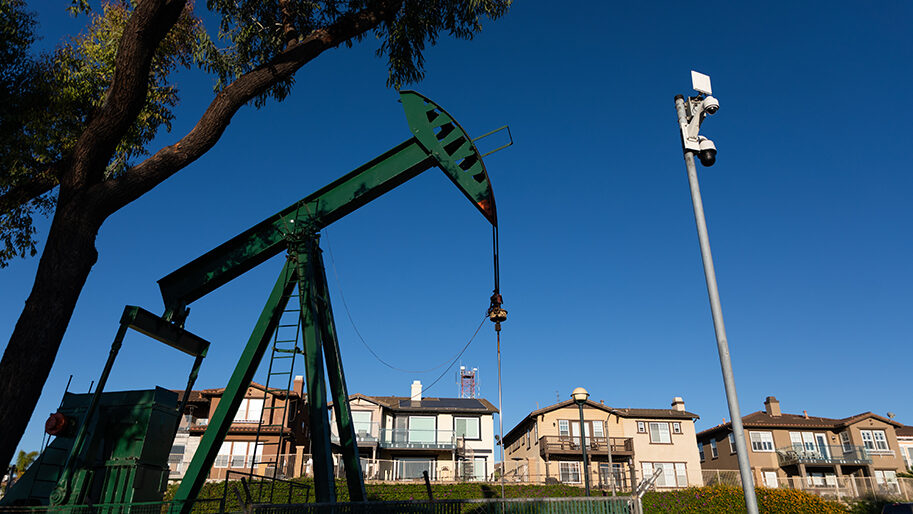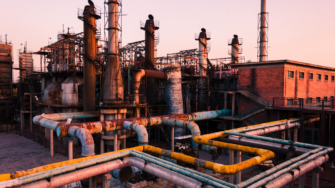Ending Oil and Gas Extraction in California

California is leading the country in renewable energy and making progress every day, but it’s also the number seven state in the country for oil production. There are about 105,000 oil and gas wells throughout California, 80 percent of which are in Kern County. Culver City and Los Angeles are also hotspots for urban oil and gas drilling.
These oil and gas operations disproportionately harm lower-income, working-class communities and people of color. About 35,000 of the wells in California are idle, but both active and inactive wells release pollution that threatens public health and the environment.
In communities near extraction sites, residents experience higher rates of cancer, asthma, nausea, dizziness, nose bleeds, headaches, and birth complications, some of which are likely caused by proprietary chemicals used in the extraction process. Uncapped wells release carcinogens like benzene and formaldehyde as well as methane, a potent greenhouse gas. Wells can continue to release those chemicals even years after they’ve been abandoned, in some cases prompting emergency evacuations.
After years of advocacy from environmental justice communities, SB1137 (Gonzalez, Limón) was signed into law in 2023. The law establishes 3,200-foot health and safety buffer zones between oil and gas operations and homes, schools, and hospitals. Thanks to the leadership of the VISIÓN coalition, the Last Chance Alliance, and allies, this common-sense policy applies not only to new wells, but also to rework permits on existing operations, effectively ending all drilling close to California communities in the near future.
Even with this win, California communities are still contending with pipelines, pollution from truck traffic, and the risk of land-based spills and catastrophic accidents at oil and gas operations.
The California state legislature has also made progress toward plugging the state’s idle oil wells. In 2024, The Climate Center worked in coalition with partners to get AB 1866 (Hart) signed into law. The law requires oil operators to develop a comprehensive plan to plug the estimated 40,000 idle oil wells in California within ten years. It also requires operators to prioritize plugging wells within 3,200 feet of where communities live, play, and work.
As with all bills, once enacted, many years of implementation and enforcement follow. The Climate Center and coalition partners will remain vigilant to ensure that state regulators implement and enforce the laws as intended.
The Climate Center is working with our allies to ensure that no new wells are permitted as we urge state leaders to phase out existing oil and gas operations. Idle wells need to be closed, capped, and cleaned. Active wells need to be phased out on an ambitious timeline that helps transition oil and gas workers to safer jobs in the clean energy economy.
The climate risks of oil and gas wells are clear. Even if California follows through on renewable energy development, clean microgrids, sustainable transportation, and building electrification, the millions of barrels of oil we produce every year have an unacceptable impact on the climate. To align with the latest science and secure climate justice for all, California must phase out oil and gas extraction as soon as possible while ensuring a just transition for workers.
